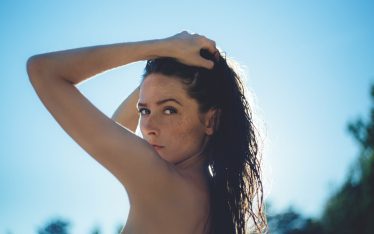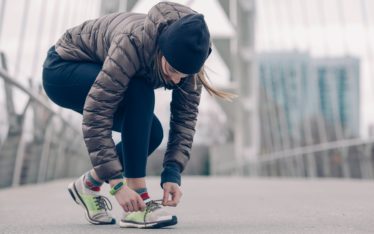Lately, we’ve been blessed with with some unseasonably mild weather, wall to wall blue skies and glorious sunshine. I’m not complaining, I can’t wait to start catching up with natural Vitamin D again.
Vitamin D is naturally made in your skin when it is exposed to ultra violet B radiation (UVB) in natural sunlight. Vitamin D is essential for the absorption of calcium and phosphorous for the bones and teeth, regulates mood, boosts your immune system and even helps with weight loss. It is not readily available from most foods and is only really naturally available from the sun. This is where the dilemma begins. We are told of the dangers of the sun and to cover up with sunscreen. The higher the protection, the better. In Australia, the mantra of complete cover up and strong sunscreens has led to many becoming Vitamin D deficient. Don’t worry, I’m here to help you get the balance right.
Your body synthesises Vitamin D when your bare skin is exposed to the UVB in sunlight. The amount of Vitamin D your body makes will depend on your skin type, time of day, geographical location and the amount of bare skin offered to the sun gods.
Paler skin generates Vitamin D faster than darker tones. It can take up to two hours for a very dark skinned person to make the same amount of Vitamin D as a very pale skinned person makes in 15 minutes in the same conditions. It follows that exposing a larger area of skin, like your back, will produce more Vitamin D in less time than a smaller area like your hands and face.
The time of day will make a difference too. Exposing your skin around midday is when more of the suns UVB rays penetrate the atmosphere and reach the surface. If your shadow is shorter than your height, then you are at the peak of producing Vitamin D and also at the most risk of burning. Bare skin should only be exposed for very short periods during this time to be safe. Where you are in the world makes a difference too. The closer you are to the equator means that you will be able to receive enough UVB for more of the year and need shorter exposure to the sun to make Vitamin D.
In conclusion, do make the most of summer. We are deprived of UVB and the natural ability of our bodies to naturally produce Vitamin D in Winter usually between October and April, when daylight hours are reduced and the sun isn’t as high as in the summer. A little bare skin exposure is good for you, just be careful not to allow your skin to burn, regardless of your skin tone. Sunshine is good, burning is bad. Be comfortable with the amount of bare skin on show and remember to use sunscreen or cover up before your skin starts to damage. Being outside in the midday sun isn’t just for mad dogs and Englishmen.
Written by Bhavash Padhiar. Read more work by Bhavash here…
Twitter: @bhavashmedical
Facebook: @wimblederm






